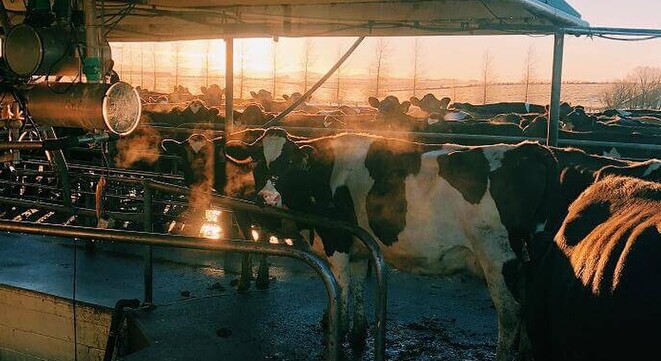With winter just around the corner and the season winding down, we have some useful tips for a smooth dry off if you have a VetSouth team coming to dry off your herd.
The end of the road is near and we can all see the light at the end of the tunnel. We just have one more tiny, but kind of big hill to climb — drying off!
If it’s your first time having the VetSouth team come in to dry off your herd (or if you just need a reminder), here is what you can do to make sure that the job is efficient and runs smoothly.
Please bear in mind that although they might seem like minor requests, they can significantly alter the length of the call. So the more boxes that you can tick that are relevant for your shed and cows, the quicker we will be out of your hair and you can go celebrate your season.
- Hot Water
- Three Titters
Are they clearly marked with a leg band or paint? We do not put antibiotic dry cow treatment in non-lactating quarters. Identifying these cows quickly and easily will allow us to treat the other quarters, and move onto the next cow without needing clarification each time there is a three titter. Also, don’t forget to take the leg bands off after the cow has been treated, and before putting her onto crop.
- Multiple Treatments
- In an ideal world the different treatment mobs would be separate. If you can do this, brilliant! If you can’t, we need to be able to clearly identify the different cows needing different treatments. We can dry off up to four different herds a day and each farm has different colours and codes for different treatments so making this as clear as possible makes life a lot less confusing. Going through your herd and identifying the cows needing different treatment in the days prior to us coming out will allow you to check, then check again that you have marked cows correctly to receive their allocated treatment — even more so if you have cows getting teat seal only.
- Diet
Not only is straw and hay the right feed to lower milk production prior to dry off, it also means less runny poo! Other than the obvious, runny poos does not allow for a clean work environment so extra cleaning is necessary to meet the hygiene standards we set when inserting treatment. Cleaning is the part of the job that takes the longest so only having to clean something once will save time - this is including ourselves!
- Milking Out
- Having someone there making sure the cows are milked out properly will save us time because we won’t have to stop to come find you to put the cups back on. It is VetSouth's Policy that we do not cup cows.
- Rubbish
Having someone at cups off to put rubbish in the bin will make the job more efficient.
- Pre-wiping
Grabbing a pack of wipes and pre-wiping each teat is another time saver.
- Teat Spray
It is important to teat spray the cows once they’ve been treated. An automatic teat sprayer is ideal but if not, having a teat spray bottle available and ready will be great.
- Staff
Having staff around that know the herd well and are able to answer questions if anything seems out of the ordinary with a particular cow, will allow us to make quick decisions. We can then make changes if necessary and do so in a timely manner. We record any changes that we do make and can have this available to you at the end of the call.
Other Considerations:
Are you transporting your cows on a stock truck to winter grazing? Although the best thing to do would be to have your cows dry off completely at home and then send them to grazing, this is not always practical. If your loading ramp is in your dairy yard and you are wanting them to go to grazing immediately, it’s best to load them directly after drying them off. Bringing cows back to the cow shed in the days following dry off can trigger cows to drop their milk and lose all their dry cow treatment. If you know your dry off dates and you’re organised and already have your trucks booked, call us at the clinic to reserve your dry cow spot today.
Transitioning - it is important to transition cows onto crops to allow their gut bacteria to adapt to a different food type. If this is not done properly the aftermath can be catastrophic. Talk to your KeyVet if you have any questions about your cow's transition period.
- Stephanie Allison

